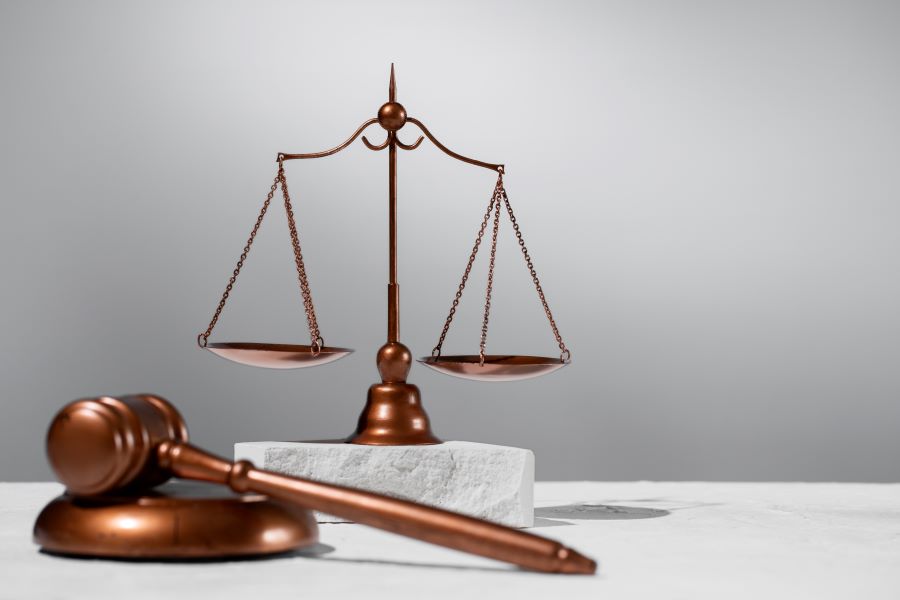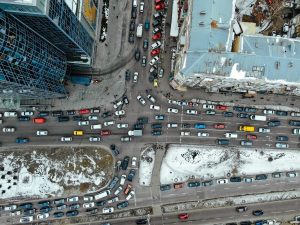Every year, many auto accidents occur all across America, including the state of Oregon. However, how car accident cases are dealt with varies from state to state, with Oregon notably having its distinctive “at-fault” system for assigning blame and liability. In this guide, we’ll explore how fault is attributed after a car accident in Oregon and other Oregon car accident laws.
Oregon’s At-Fault System
Regarding any kind of car accident case, we can divide states into two distinct categories: at-fault and no-fault. Oregon falls into the former category, which means that figuring out fault after a car accident in Oregon is a huge part of the both legal and insurance processes.
Definition and Explanation
So, what exactly is meant by an “at-fault” state and how does this impact the process of assigning blame after an Oregon car accident? Well, in at-fault states, whichever driver is deemed responsible for causing the accident is also the one who is financially liable for any damages of that accident.
In other words, after a car accident in Oregon, the driver who is said to be at-fault the insurance of the driver who is deemed at fault will have to cover the costs of all damages (medical bills, property damage, etc.)
Comparison with No-Fault States
On the other side of the spectrum, there are no-fault states. A no-fault state works differently. In states like these, drivers have to have personal injury protection or PIP, insurance, which pays out for medical bills and other costs, no matter who is at fault or responsible after an accident.
So, if Oregon was a no-fault state, then drivers would rely on their own insurance companies after an Oregon car crash to cover various expenses, thanks to their no-fault insurance.
Benefits and Drawbacks of the At-Fault System
There are both pros and cons to the at-fault system used for assigning blame and figuring out insurance payouts after a car crash in Oregon. On the plus side, this system ensures that blame is rightfully assigned following a vehicle accident in Oregon and doesn’t force drivers into having their own PIP insurance.
On the downside, it means that there’s often a lengthy and sometimes complex legal process after each Oregon vehicle accident, with car accident attorneys having to be involved to figure out who is at fault.
Key Oregon Car Insurance Considerations
Next, let’s dig deeper into how the average Oregon car accident is dealt with, and what kind of insurance Oregon drivers are required to have.
Fault Determination
If and when an Oregon car crash happens, fault determination is one of the most important parts of the process. For this, the insurance companies of both drivers have to get involved and appoint their own adjusters to figure out which driver is at fault.
This is why one of the most important steps to take after a car accident is to contact trusted car accident lawyers who can help you argue your case.
Modified Comparative Negligence
As well as being an at-fault state, Oregon uses a particular kind of comparative fault rule as part of the fault determination to assess and assign car accident liability.
What this means in simple terms is that drivers cannot seek any kind of damages from other parties if they are deemed to be majorly (51% or more) at fault for a car crash in Oregon. As long as their responsibility is lower than 51%, they can go ahead and pursue comparative damages.
Comparative damages mean that the amount of money awarded to the driver will be directly proportional to their level of fault. So, if a driver is deemed to be 25% responsible for an accident, they’ll be covered for 75% (100% – 25%) of their expenses after the crash.
Minimum Car Insurance Coverage in Oregon
According to law and road rules in Oregon, all drivers must have a certain amount of liability insurance coverage. This minimum amount includes:
- $25,000 per person for bodily injury and property damage liability insurance ($50,000 per crash and $20,000 for property damage).
- $15,000 per person for personal injury protection.
- $25,000 per person (or $50,000 per crash) for uninsured motorist coverage.

Who Can Be at Fault for a Car Accident in Oregon?
A lot of different parties and people may be assigned blame and liability in a car accident claim in Oregon. It all depends on the nature of the accident.
Driver Negligence
A lot of auto accidents happen due to driver negligence, when one driver is behaving irresponsibly or showing a lack of concentration or care while operating their vehicle. They might disobey some of the rules of the road, like running a red light or stop sign, for example, or speeding. Being under the influence of drugs or alcohol also falls under the category of driver negligence.
Non-Driver-Related Factors
Sometimes, drivers aren’t necessarily the ones to blame after a vehicle accident in Oregon. There are cases when non-driver factors can cause a crash, like potholes, poor road conditions, mechanical or technical failures of a vehicle, or low visibility because of bad weather. In these cases, fault may be assigned to those who are responsible for road maintenance or other parties.
Pedestrians and Bicyclists
Drivers aren’t the only road users. Pedestrians also cross roads and cyclists use them to cycle along. Both of these groups may be involved in causing an accident if they behave recklessly or negligently, like stepping out into traffic or cycling dangerously.
Multiple At-Fault Parties
In a multi-vehicle accident, there may be more than one driver who is held responsible for the accident. As discussed earlier, Oregon uses a comparative fault law, so blame is assigned on a percentage basis. One driver might be deemed 75% responsible for a crash, while the other is 25% responsible.
Unforeseeable Circumstances
Another possibility that could cause an Oregon vehicle accident is some sort of unforeseeable situation, which none of the drivers or parties involved could have predicted and which is totally beyond their control.
Steps to Determine Fault for a Car Crash in Oregon
Next, let’s see step-by-step what is involved in the process of determining fault after an Oregon auto accident.
Gathering Evidence at the Scene
Naturally, evidence is a crucial factor in figuring out how an accident happened and who was to blame. Examples may include:
- Photos and Videos: Photo and video evidence of the crime scene helps to paint the picture of how the accident occurred, how severe it was, etc.
- Witness Statements: Often, witnesses to an auto accident will be asked to share their view of how it happened to figure out who was responsible.
- Police Reports: Police reports should also be filed after any accident to explain how it occurred and sum up the police’s findings.
Consulting with Authorities
The authorities often play a large role in explaining and illuminating the details of an auto accident.
- Role of the Police: Typically, police officers are some of the first people on scene at the site of an accident. They gather evidence, take statements, and file an official report of what happened.
- Role of Insurance Companies: Insurance companies, when contacted about an auto accident, will assign their own “adjusters” to the case to dig into the details and find out more about how it happened.
Analyzing the Evidence
Evidence analysis is, of course, a crucial part of the puzzle in assigning blame after an auto accident before any statute of limitations expires.
- Reviewing Traffic Laws: Given the complexity of many accidents, it’s important to review all relevant rules of the road to find out who was to blame (and how much blame can comparatively be assigned to each party).
- Assessing Damage and Impact Points: Experts like Portland personal injury lawyers will also look at physical damage to the vehicles to learn more about how an accident occurred and which driver (if any) is more to blame.
Common Factors Influencing Fault
A huge range of factors may impact fault in an Oregon auto accident case, including the behavior and sobriety of the drivers, the weather and road conditions at the time of the accident, the time of day when the accident occurred, and so on. This is why the process can be quite lengthy and complicated, requiring the efforts of specialist lawyers.
When Do You Need to Hire a Car Accident Attorney in Oregon?
In any situation where you’ve been involved in an auto accident in Oregon, it’s worth hiring auto accident attorneys. As explained above, these cases are often complex and it can be tricky to navigate those complexities alone. You may struggle to prove your innocence and could miss out on large amounts of compensation without expert legal assistance. So, if you’ve been in an accident, contact our skilled personal injury lawyers today.
Summary
Overall, determining fault after an Oregon car accident is quite a complicated process, involving a lot of factors and careful examination of evidence, reports, statements, and more. To ensure you end up on the right side of fault determination, it’s important to work with the best local lawyers you can find.





